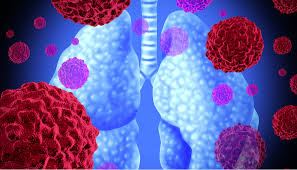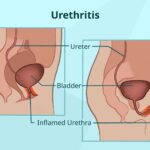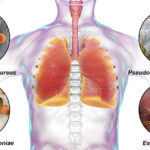Nonsquamous non-small cell lung cancer (NSCLC) encompasses a broad group of lung cancers that do not exhibit squamous differentiation. The majority of these cases fall under the adenocarcinoma subtype, which is the most prevalent form of lung cancer in both smokers and non-smokers. Due to advancements in molecular profiling and targeted therapies, the treatment landscape for nonsquamous NSCLC has evolved significantly in recent years.

Classification of Nonsquamous NSCLC
Nonsquamous NSCLC includes several histological subtypes, primarily:
1. Adenocarcinoma
- Originates from glandular cells in the lung periphery
- Often associated with EGFR mutations or ALK rearrangements
- More common in non-smokers and younger patients
2. Large Cell Carcinoma
- Poorly differentiated, lacking features of adenocarcinoma or squamous carcinoma
- Rapid growth and early metastasis
- Diagnosed through exclusion and histological markers
3. Other Rare Subtypes
- Includes sarcomatoid carcinomas and adenocarcinoma variants such as invasive mucinous adenocarcinoma
- Often require specialized pathological assessment
Staging of Nonsquamous NSCLC
Staging determines the extent of disease and guides treatment decisions. It follows the TNM classification:
- T (Tumor): Size and local invasion
- N (Nodes): Lymph node involvement
- M (Metastasis): Presence of distant spread
TNM-Based Staging System
- Stage I–II: Surgical candidates, often with adjuvant therapy
- Stage III: Requires multimodal approach (chemoradiation, surgery, targeted therapy)
- Stage IV: Primarily managed with systemic therapies
Molecular and Biomarker Profiling in Nonsquamous NSCLC
A hallmark of nonsquamous NSCLC is the integration of biomarker testing to guide targeted therapies.
Key Actionable Genetic Alterations
| Mutation/Rearrangement | Targeted Therapy Available |
|---|---|
| EGFR | Osimertinib, Afatinib, Erlotinib |
| ALK | Alectinib, Brigatinib, Lorlatinib |
| ROS1 | Crizotinib, Entrectinib |
| BRAF V600E | Dabrafenib + Trametinib |
| NTRK | Larotrectinib, Entrectinib |
| MET exon 14 skipping | Capmatinib, Tepotinib |
| KRAS G12C | Sotorasib, Adagrasib |
PD-L1 Expression
- High PD-L1 (≥50%): Consider immune checkpoint inhibitors as monotherapy
- Intermediate/low PD-L1: Combination chemo-immunotherapy preferred
Molecular testing should include next-generation sequencing (NGS) for comprehensive profiling, especially in advanced-stage disease.
Diagnostic Workflow for Nonsquamous NSCLC
Accurate diagnosis requires a stepwise approach combining imaging, histology, and biomarker testing.
Initial Evaluation
- Chest CT Scan with contrast
- PET-CT scan for metastasis
- Brain MRI in Stage III–IV or neurologically symptomatic patients
Tissue Acquisition and Analysis
- Bronchoscopy, EBUS, or CT-guided biopsy
- Histopathological confirmation of nonsquamous subtype
- Molecular and PD-L1 testing from biopsy samples
Treatment Strategies for Nonsquamous NSCLC
Early-Stage (Stage I–II)
- Surgical resection (lobectomy preferred)
- Adjuvant chemotherapy for high-risk Stage IB–II
- Adjuvant osimertinib if EGFR mutation is present
Locally Advanced (Stage III)
- Concurrent chemoradiotherapy (cisplatin or carboplatin-based)
- Consolidation immunotherapy with durvalumab for 12 months post-treatment
- Surgical resection considered for selected Stage IIIA patients
Advanced or Metastatic (Stage IV)
1. Targeted Therapy
- For patients with actionable driver mutations
- Preferred first-line over chemotherapy due to superior progression-free survival
2. Immunotherapy ± Chemotherapy
- PD-L1 ≥50%: Pembrolizumab monotherapy
- PD-L1 <50%: Combination therapy (e.g., carboplatin + pemetrexed + pembrolizumab)
3. Chemotherapy
- For patients without actionable mutations and contraindications to immunotherapy
- Pemetrexed + platinum regimen standard for nonsquamous histology
Monitoring, Resistance, and Re-Treatment
Disease Monitoring
- Imaging every 2–3 months during active treatment
- Evaluate for signs of treatment response or progression
Managing Resistance
Resistance to targeted therapies is common. Rebiopsy or liquid biopsy (ctDNA) may identify:
- Secondary EGFR mutations (e.g., T790M)
- Histologic transformation (e.g., to small-cell lung cancer)
- New mutations for alternative targeted options
Prognosis and Survival Outcomes
Survival in nonsquamous NSCLC varies significantly by stage and molecular subtype:
| Stage | Median Survival |
|---|---|
| I | >60 months (5-year survival up to 70%) |
| II | 30–50 months |
| III | 15–30 months |
| IV | 8–24 months (improved with targeted therapy) |
Patients with EGFR, ALK, and ROS1 alterations may survive several years on targeted therapies with good quality of life.
Future Directions and Clinical Trials
The field continues to evolve with:
- Bispecific antibodies (e.g., amivantamab for EGFR-MET)
- Antibody-drug conjugates (ADCs) for HER2, TROP2-positive NSCLC
- Expanded use of liquid biopsies for real-time tumor evolution tracking
- Tumor mutational burden (TMB) as an immunotherapy predictive marker
Participation in clinical trials is recommended for eligible patients to access cutting-edge therapies.
Frequently Asked Questions
What is nonsquamous non-small cell lung cancer?
It is a type of NSCLC that includes adenocarcinoma, large cell carcinoma, and other subtypes lacking squamous features.
How is nonsquamous NSCLC different from squamous NSCLC?
Nonsquamous NSCLC arises from glandular lung cells and is more likely to harbor targetable mutations, while squamous NSCLC typically lacks these biomarkers.
Is molecular testing essential in nonsquamous NSCLC?
Yes, molecular and PD-L1 testing is critical for guiding first-line treatment decisions and improving outcomes.
What are the main treatments for nonsquamous NSCLC?
Treatment includes surgery, chemotherapy, targeted therapy, and immunotherapy based on cancer stage and genetic profile.
Can nonsquamous NSCLC be cured?
Early-stage disease is potentially curable with surgery and adjuvant therapy. Advanced disease is typically managed chronically with systemic treatments.
Nonsquamous non-small cell lung cancer represents a biologically diverse and increasingly treatable form of lung cancer. The integration of advanced diagnostic tools, molecular profiling, and personalized treatment strategies has transformed the outlook for many patients. Continued research and clinical innovation are vital for sustaining progress and improving long-term survival. For optimal outcomes, early detection, comprehensive biomarker testing, and a multidisciplinary treatment approach remain the cornerstone of care.

